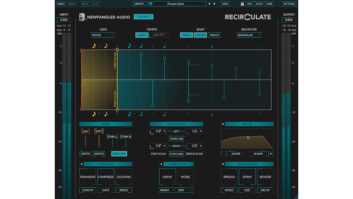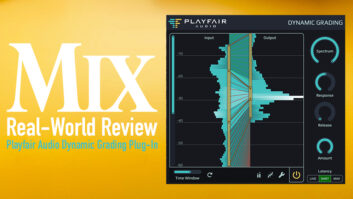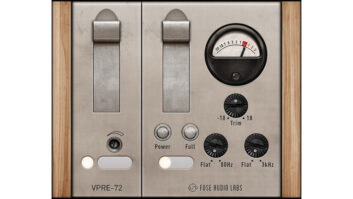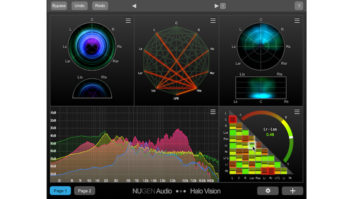Nashville, TN – May 1, 2008… When it comes to state-of-the-art audio capabilities, you’d be hard pressed to find a more advanced mobile audio production facility than MTV Networks’ Remote Unit 8. Equipped with a 56-fader Lawo mc²66 console that serves as the truck’s primary mix station—coupled with a second, smaller mc²66—Remote Unit 8 handles televised music shows, large scale concerts, and a wide assortment of other high profile projects. MTV Networks (MTVN) recently completed installation of Lawo’s new Plug-in Server, which adds dramatically more signal processing capability. The system was first placed into service for the 2008 CMT (Country Music Television) Music Awards on April 14th.
Designed as a dedicated environment for VST-type audio processing plug-ins, Lawo’s Plug-in Server facilitates seamless integration with the company’s mc² series third generation consoles while providing greater flexibility in the use and routing of processed signals—all while freeing the host recording platform from the system overhead typically associated with numerous plug-in processors. With the integration of the new Plug-in Server, MTVN’s mix engineers have access to a vast number of signal processing tools and, hence, enjoy the freedom to select those processors without the concern of taxing system resources.
Marc Repp, Audio Operations Engineer for MTVN, along with associates Stan “Quack� Dacus and Greg Lankford, are the three main mix engineers who travel with Remote Unit 8. In the fast-paced production environments that Repp, Dacus, and the other engineers frequently find themselves, the selection of outboard signal processing equipment isn’t always the best choice for getting the job done, as Repp explained.
“We mix a lot of multiple act TV shows and recordings,� said Repp, “and if you’re setting up an outside processor on an act to act basis, somebody has to keep up with all those settings so they can be reset as you move from one act to another. By contrast, if the signal processing is saved as part of the console’s automation, it gets recalled as part of the snapshot and is ready to go instantaneously. In addition to dynamics processors such as compression and limiting, we can just as easily deploy reverbs, delays, and other effects that, previously, were only available via the outboard gear.�
“We have a large assortment of outboard signal processing gear on the truck,� said Repp, “though using it isn’t necessarily as convenient as one might expect—particularly because of the time constraints involved in accessing an external processor. For this reason, there has always been a tendency to use the console’s onboard processing, but in doing so, we were limited in our choices of dynamics processing and, like any other digital console, had to closely monitor system resources. Our new plug-in server opens the door to far greater choices since it can be configured for any type of VST plug-in without taxing system resources.�
Lawo’s Windows OS-based Plug-in Server accepts all VST-type audio processing plug-ins without any modification. Installation appears as though the plug-in is being installed within a standard audio workstation environment. Subsequently, the plug-in server is integrated with the Lawo HD Core processor, with control of the system originating at the console. Once an audio plug-in is installed on the plug-in server, the mc² control system identifies it as a “known plug-in�. Applying a plug-in is as easy as assigning it to an effects slot. Additionally, audio tielines are handled automatically and appear in the system’s routing representation. All plug-in parameters are available directly from within the console.
“The plug-in server marks a dramatic change to the console’s capabilities,� says Repp, “and yet using the system is just as easy as it was before. It gives us the flexibility of a digital workstation’s signal processing functions and makes them a seamless part of the console’s operations. We now have access to a wide assortment of signal processing capabilities that didn’t exist natively to the console while having a very user friendly environment in which to apply those signals as we mix a project. The CMT Music Awards was our first outing with the new system, and it passed the test with flying colors. The only limitations I see for the future of this product are our own imaginations.�
About MTV Networks
MTV Networks, a unit of Viacom (NYSE: VIA, VIA.B), is one of the world’s leading creators of programming and content across all media platforms. MTV Networks, with more than 150 channels worldwide, owns and operates the following television programming services – MTV: MUSIC TELEVISION, MTV2, VH1, mtvU, NICKELODEON, NICK at NITE, COMEDY CENTRAL, TV LAND, SPIKE TV, CMT, NOGGIN, VH1 CLASSIC, LOGO, MTVN INTERNATIONAL and THE DIGITAL SUITE FROM MTV NETWORKS, a package of 13 digital services, all of which are trademarks of MTV Networks. MTV Networks connects with its audiences through its robust consumer products businesses and its more than 300 interactive properties worldwide, including online, broadband, wireless and interactive television services. The network also has licensing agreements, joint ventures, and syndication deals whereby all of its programming services can be seen worldwide.
About Lawo
Lawo is a manufacturer of digital audio networking systems and consoles for a wide range of applications from small to large scale audio production in television and radio, post production, and live sound. Established in the 1970s, the company’s manufacturing center is located in the Rhine valley town of Rastatt, Germany. For additional information on Lawo’s plug-in integration and all Lawo products, visit the company online at www.lawo.ca.
###







